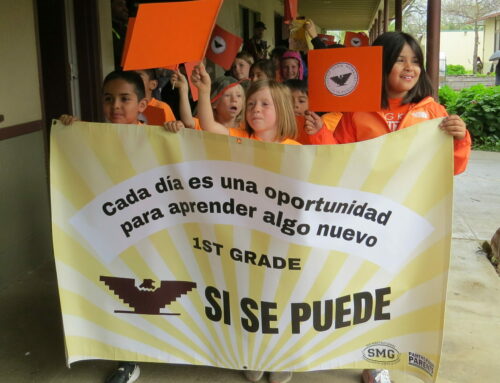Restorative Justice is an approach to discipline that focuses on repairing harm by engaging participants
Published in the July 20 – Aug. 2, 2016 issue of Morgan Hill Life

Kimberly Beare
The debate over student discipline has been raging for decades. Every few years a new idea emerges about how to “fix” a student’s behavioral problem. From corporal punishment to writing the same sentence ad nauseum until their hand goes numb, detention, suspension, cleaning blackboards after school — the list goes on.
Recently, I read an opinion piece about the Restorative Justice program used in Morgan Hill Unified schools. I was disheartened to learn that not only is there a clear misconception about how this program works to the benefits of our students, and our community, but the majority of what was written was based solely on speculation rather than first-hand knowledge.
Restorative Justice is often viewed as a “new” form of punishment, but it is not a new concept at all. In fact, restorative approaches have spanned criminal justice systems for thousands of years. To think of RJ simply as a “new” punishment system is an inaccurate characterization of this program. RJ, or restorative practices, as implemented in our schools is a powerful approach to discipline that focuses on repairing harm through an inclusive process that engages all participants: victims, aggressors, parents and teachers. All of those who are part of the community become part of the solution, rather than focusing solely on punishing the offender.
We know that RJ practices are only as good as the community they are being applied in. What many fail to see is that our school campuses are communities themselves, and they need to be treated as such. Our primary focus will always be on educating our students and preparing them for college or the workforce. But this program allows us to take our duty to teach our students a step further, in helping them grow emotionally and socially.
In many ways, we are typical transactional institutions, a place where students come to get things done: knowledge, social interaction, a diploma. But what happens if we begin to view and treat campuses as the communities they are? We start to teach students that when one part of our community is harmed, it affects all of us. Our schools in Morgan Hill are more than sterile educational institutions. Our schools are the heart of this community. Everything we do affects those around us.
Through our Restorative Justice program, students are being taught to be productive members of our community, they are learning how their actions directly affect others, on and off campus, they are being taught how to deal with their behavior, and how to handle the behavior of others in a compassionate and meaningful way. We are connecting students to each other. We are also supporting our students to express themselves in positive rather than harmful ways. There are so many benefits to using restorative practices in schools. Not only do our students grow emotionally but there is a reduction in suspensions and expulsions, a reduction of instructional time lost due to managing student behavior, academic outcomes are improved and we see an improvement in teacher morale.
Martin Murphy Middle School is at the epicenter of our Restorative Justice program in the Morgan Hill Unified School District. In one year, suspension rates have plummeted by 42 percent — and it’s not because suspension is no longer an option at schools, because it is, but because our students are beginning to take responsibility for their actions. They are learning to recognize why they act out and how to handle those issues, they are taking responsibility for the wellness of the school community, they are holding each other accountable. Additionally, recidivism is down by 20 percent, which means students who are punished are not becoming repeat offenders. This charge for a more cohesive community campus is being led by our very own teachers. They are leading the classroom community and value building circles, an integral part of restorative practices. At the classroom level, RJ practices are further validated as a way to grow and learn and not just a “new” form of punishment handed down by administrators.
MHUSD is exceptionally lucky to have Morgan Hill police officer Jeff Brandon as our school resource officer. He goes above and beyond the call of duty on a daily basis to help our students. With our RJ program and the help of officer Brandon, we are looking to make a significant kink in the school-to-prison pipeline. Waiting until students are adults to try and teach them right from wrong fails. We must guide them while they are young before they get into a type of trouble they cannot escape from. That is what our RJ program is working toward.
Today’s RJ program is not what it was 10 or 15 years ago. This is not a “new” form of punishment for students. It is quite the opposite. It is a community-building tool that is shaping the next generation of leaders into compassionate, responsible individuals. I encourage anyone in our community who would like to learn more about how MHUSD implements Restorative Justice to stop by Martin Murphy or schedule a tour. Our doors are always open for visitors to experience first-hand how we are positively impacting our community.
Kimberly Beare is the communications coordinator for the Morgan Hill Unified School District. She wrote this column in response to a Community Voices column written by Mike Brusa in Morgan Hill Life’s June 22 issue.






